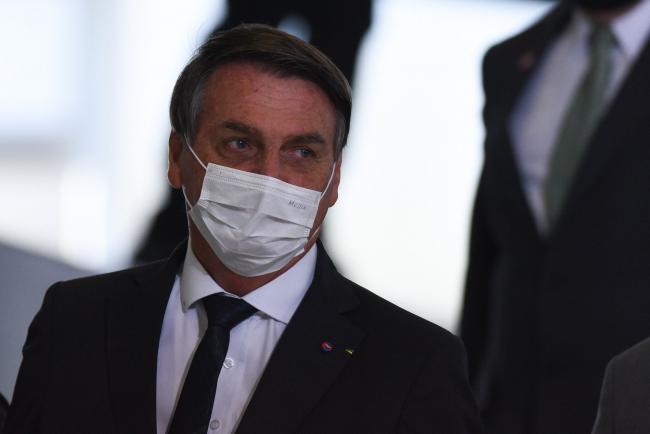(Bloomberg) -- Brazil reached the mark of 4 million confirmed coronavirus cases, doubling the infection count in two months as large parts of the Latin American nation emerge from isolation.
The country reported 43,773 new cases on Thursday, pushing the toll to 4,041,638. Deaths rose by 834 to 124,614, according to data from the Health Ministry. Globally, the nation lags only the U.S. in both cases and deaths from the disease, though India is fast closing in when it comes to infections. On a per capita basis, though, Brazil recently passed the U.S. and Chile for most deaths per million people and is primed to overtake Italy for the 5th spot globally, according to data compiled by Bloomberg.
Brazil has been adding about a million cases a month -- in mid-July, it had 2 million confirmed infections -- as the virus hits areas of the country that were spared earlier in the pandemic. But the pace of new infections appears to have slowed since mid-August. After four weeks with over new 300,000 cases, figures for the past two weeks have been closer to 265,000. The number of weekly deaths fell to below 6,500, the lowest since May.
The rich Southeast region of the country, home to highly-populated states like Sao Paulo and Rio de Janeiro, continues to be the hardest hit region, with more than 1.4 million cases, followed by the Northeast with 1.1 million. The North of the country, largely blanketed by the Amazon (NASDAQ:AMZN) rain forest and where hospital beds are scarce, has the highest mortality rate in the nation: 73.5 per 100,000 inhabitants, more than double the rate seen in the more developed South.
Brazil’s response to the pandemic -- no national approach, a shortage of testing and a push to reopen before the disease receded -- turned the country into a global hotspot.
President Jair Bolsonaro pushed the scientifically-unproven drug hydroxychloroquine as a solution to the outbreak and criticized severe lockdown measures implemented by governors. Contradicting policies made predicting when the infection rates would recede even more difficult than it already was in a country of 210 million people where some states are the size of France and where many live in poverty and can’t afford not to work.
Researchers from the PUC University in Rio say the virus’s reproductive rate rose to 1.01 after more than a month of decline, though it varies wildly across the country. It’s below 1 in 20 states and the Federal District, and above 1.5 in Santa Catarina, which was largely spared early on in the pandemic but has seen cases spike to over 180,000 from 87,000 in the past month.
The group forecasts cases will top 4.55 million by mid-September, with deaths reaching 136,000.
The pandemic brought on the largest economic slump on record, a 11.4% decline in the second quarter from a year ago. But Bank of America (NYSE:BAC) said last week that its internal data indicates there was a strong rebound in Brazil’s economic activity. The bounce was so significant that BofA says growth as measured by the central bank’s economic activity index, or IBC-Br, may have returned to pre-Covid levels as social isolation measures wane and mobility indicators continue to rise.
Over recent weeks, local media have repeatedly shown pictures of packed beaches and parks, and crowds gathered at recently reopened bars and restaurants. The state of Sao Paulo, which has been the epicenter in the country since the first reported case in late February, has seen isolation rates fall to around 40%, from as high as 60% back in March.
©2020 Bloomberg L.P.

